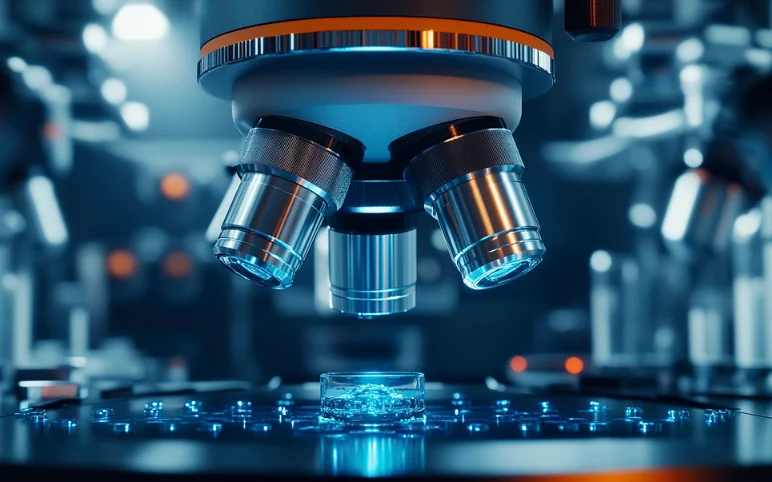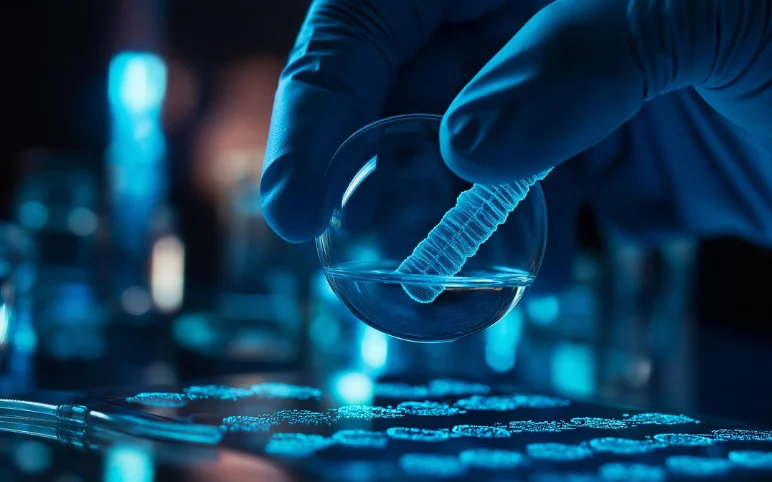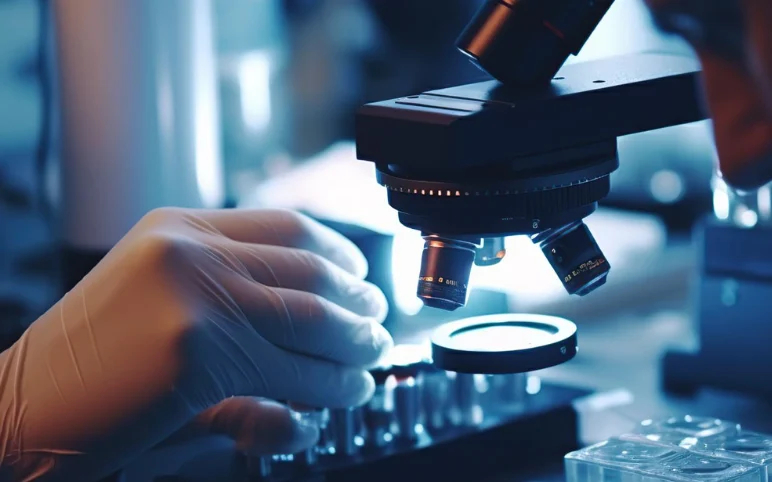OR3O™ Dual Mobility System launched by Smith+Nephew in Japan for use in primary and revision hip arthroplasty
On September 20, 2022, Smith+Nephew, a leading global portfolio medical technology business, announced the launch of OR3O Dual Mobility System for use in primary and revision hip arthroplasty in Japan.
For its liner and femoral head, OR3O uses Smith+Nephew’s most recent advanced bearing surface, OXINIUM DH, as well as its own OXINIUM on XLPE. This reduces the wear and corrosion hazards that have been connected to the alloy by removing the modular CoCr liner and/or CoCr head ball from the build.
The OXINIUM DH (Diffusion Hardened) variant of Smith+Nephew’s OXINIUM Technology platform uses additive manufacturing to increase the hardening depth.
According to studies, dual mobility is better suited than ceramic-on-ceramic or metal-on-metal large head series to handle dislocation. Dual mobility implants, as opposed to conventional options, have a small diameter femoral head that locks into a larger polyethylene insert, enhancing stability, lowering the risk of dislocation, and providing a wider range of motion.
Shinya Dobashi, Senior Vice President and Managing Director, North Asia, Smith+Nephew, said, “Smith+Nephew’s OR3O Dual Mobility System is a groundbreaking introduction for Japan that offers technology not available in competitive systems. Over a dozen peer reviewed publications have now cited or expressed concerns over corrosion or elevated ions in CoCr modular dual mobility liners. The reduced corrosion of our OXINIUM and OXINIUM DH bearing surface sets OR3O apart from the competition.”
As per DelveInsight’s “Hip Reconstruction Devices Market” report, the global hip reconstruction devices market was valued at USD 9.26 billion in 2021, growing at a CAGR of 5.06% during the forecast period from 2022 to 2027 to reach USD 12.44 billion by 2027. The rise in the demand for Hip Reconstruction/Replacement Devices is primarily due to the rising geriatric population across the globe, the increase in obesity cases owing to sedentary lifestyles, the introduction of custom-made implants, and technological advancements in the product portfolio, among others; thereby contributing in the growth of the hip reconstruction devices market during the forecast period from 2022-2027.
Identity™ Shoulder System, a product of Zimmer Biomet, Receives FDA Clearance for Shoulder Replacement
On September 20, 2022, Zimmer Biomet, a global medical technology leader with a comprehensive portfolio designed to maximize mobility and improve health, announced the U.S. Food and Drug Administration (FDA) 510(k) clearance of Identity™ Shoulder System for anatomic, reverse, and revision shoulder replacement.
In order to reduce pain and maximize the range of motion, the Identity Shoulder System is a convertible system that employs unique technologies to match each surgeon’s approach to a specific patient’s anatomy. The Identity Shoulder System, the newest addition to Zimmer Biomet’s line of shoulder replacement systems, is made to let surgeons precisely plan and carry out a patient-specific surgical procedure.
By offering eight humeral tray combinations, the Identity Shoulder System improves upon the conventional inlay and onlay reconstruction used in reverse shoulder arthroplasty and gives surgeons more options for aligning the humerus (upper arm bone) with the glenoid (shoulder socket) without lengthening the arm. The Identity Shoulder System, created to provide adaptability for prospective revision procedures in the future, allows for 5mm of extra joint space below resection2, giving surgeons more room to maneuver if a revision is ever required.
The Identity Shoulder System uses proprietary technologies, including Versa-Dial® for limitless humeral head offset placement and Alliance® Glenoid for a wide range of glenoid alternatives, to adapt to a patient’s specific anatomy, like all shoulder systems in Zimmer Biomet’s portfolio.
Ivan Tornos, Chief Operating Officer at Zimmer Biomet said, “The FDA clearance of the Identity Shoulder System is exciting because it offers surgeons a highly adaptable solution for anatomic, reverse and revision procedures to help patients optimize natural shoulder movement. This significant milestone adds to progress in our growing Sports Medicine, Extremities and Trauma (S.E.T.) portfolio, a critical area of focus as we expand our position as a global leader in innovative medical technologies that maximize mobility.”
“The Identity Shoulder System was designed to help surgeons restore center of rotation and achieve optimal range of motion after reverse shoulder replacements, a main goal of these procedures. Shoulder specialists will value this system’s adaptability and flexibility to support their unique surgical approaches and complement diverse patient anatomies.” said William N. Levine, M.D., Chair of the Department of Orthopedic Surgery at Columbia University’s College of Physicians and Surgeons, and a member of the Identity Shoulder System development team.
According to DelveInsight’s “Shoulder Replacement Devices Market” report, the global shoulder replacement devices market was valued at USD 1.80 billion in 2021, growing at a CAGR of 7.28% during the forecast period from 2022 to 2027, in order to reach USD 2.74 billion by 2027. The shoulder replacement devices market is estimated to register positive revenue growth owing to factors such as the rising popularity of reverse total shoulder arthroplasty for rotator cuff arthropathy in the growing geriatric population due to the widespread occurrence of bone-related disorders, the prevalence of sports injuries and accidents, and growing medical infrastructure and medical facilities during the forecast period.
Otsuka Medical Devices Announces Results of RADIANCE II Pivotal Trial at TCT 2022
On September 20, 2022, Otsuka Medical Devices, a wholly owned subsidiary of Otsuka Holdings, announced the detailed results from the RADIANCE II US FDA IDE pivotal trial evaluating the endovascular Paradise™ Ultrasound Renal Denervation (uRDN) System showing a significant reduction in blood pressure in patients with uncontrolled hypertension.
RADIANCE II is a US FDA IDE, randomized, sham-controlled pivotal trial of the Paradise uRDN System for the treatment of patients with uncontrolled hypertension. It is being conducted as a multinational, multicenter study.
224 patients with uncontrolled hypertension were randomly assigned 2:1 to receive uRDN or a sham out of 1038 patients who were screened for eligibility at more than 60 study facilities in 8 countries. Unless specific BP thresholds were exceeded, patients were to refrain from using antihypertensive drugs for the duration of the 2 months of follow-up.
Study Results:
- Effectiveness: Patients using the Paradise uRDN system experienced a mean decrease in daytime ambulatory systolic blood pressure of -7.9 mmHg, compared to a decrease of -1.8 mmHg in the sham arm. This represents a statistically significant between-group difference of -6.3 mmHg (p0.0001). Similar drops in blood pressure were seen in measurements performed at night, throughout the day, at home, and in the doctor’s office.
- Safety: No major adverse events were seen at 30 days, the primary safety endpoint will be measured at 6 months, and patients will be followed for 60 months.
The RADIANCE II research met its key efficacy endpoint, as evidenced by the widely anticipated results, which showed a statistically significant decrease in daytime ambulatory systolic blood pressure at two months between uRDN and a sham operation.
“The results represent progress toward establishing a new treatment option for patients with hypertension. Through our global R&D efforts, we will continue to develop unique solutions for patients whose medical needs and conditions have not yet been met by existing treatments.” said Kazumichi Kobayashi, Executive Deputy President of Otsuka Medical Devices.
Study Principal Investigator Ajay Kirtane said, “These results are important to the field of hypertension treatment. RADIANCE II is the third and largest randomized, sham-controlled study to show that the Paradise uRDN System delivers meaningful reductions in blood pressure in patients with uncontrolled hypertension.”
According to DelveInsight’s “Blood Pressure Monitoring Devices Market” report, the global blood pressure monitoring devices market was valued at USD 1.04 billion in 2021, growing at a CAGR of 10.68% during the forecast period from 2022 to 2027, to reach USD 2.10 billion by 2027. The increase in the demand for blood pressure monitoring devices is witnessing a positive growth owing to various factors such as the increasing prevalence of hypertension, the surge in the geriatric population, the increasing prevalence of cardiovascular diseases, and technological advancements associated with the blood pressure monitoring devices which are thereby anticipated to drive the global blood pressure monitoring devices market during the forthcoming years.
Evolut™ FX Next-Gen TAVR System Launched in the U.S by Medtronic for Treatment of Symptomatic Severe Aortic Stenosis
On September 16, 2022, Medtronic, a leading global healthcare technology, announced the expanded U.S. market release of its newest-generation, self-expanding transcatheter aortic valve replacement (TAVR) system, the Evolut™ FX TAVR system.
For the purpose of improving ease of use and predictable valve deployment for physicians, Evolut FX upgrades the current Evolut platform with new capabilities. The upcoming 34th Transcatheter Cardiovascular Therapeutics (TCT) scientific symposium will feature fresh data, and the product launch further exemplifies Medtronic’s dedication to advancing TAVR solutions.
With significant design improvements, the Evolut FX system keeps the industry-leading hemodynamic (blood flow) and durability of the Evolut platform. These improvements include a modified catheter tip for a smoother insertion profile, gold indicators incorporated into the frame to give implanters direct visualization of commissure alignment, and a more adaptable delivery system with an enhanced stability layer for a more steady, predictable deployment. The most recent system, like its predecessor (Evolut PRO+), features four-valve sizes for the broadest indicated patient treatment spectrum and the lowest delivery profile currently available.
Following FDA (Food and Drug Administration) approval and a limited rollout earlier this year that received a positive response from participating physicians, the Evolut FX system has now been made fully commercially available. All commercial TAVR locations in the United States will have access to the Evolut FX system thanks to the most recent expansion.
Jeffrey Popma, M.D., vice president and chief medical officer for the Structural Heart & Aortic business, said, “This represents a milestone for our structural heart business, as we look to set new expectations for TAVR delivery systems and optimize outcomes for patients. These innovations will equip physicians with improved implant predictability, ultimately improving the overall reliability of the procedure.”
According to DelveInsight’s “Transcatheter Aortic Valve Replacement Devices Market” report, the global transcatheter aortic valve replacement market was valued at USD 3.23 billion in 2021, growing at a CAGR of 15.41% during the forecast period from 2022 to 2027 to reach USD 7.64 billion by 2027. The growing demand for aortic valve replacement devices is primarily associated with the increasing prevalence of aortic stenosis disorders, rising cardiovascular disorders, increasing demand for TAVR procedures, increasing prevalence of aortic regurgitation, and the technological advancements pertaining to the transcatheter aortic valve replacement area, thereby propelling the transcatheter aortic valve replacement devices market growth during the forecast period.
Haemonetics Pascal Precision Transcatheter Valve Repair System from Edwards Lifesciences Gets FDA Approval for Degenerative Mitral Regurgitation
On September 15, 2022, Edwards Lifesciences Corporation, a global leader in patient-focused innovations for structural heart disease and critical care monitoring, announced the company’s PASCAL Precision transcatheter valve repair system for transcatheter edge-to-edge repair (TEER) FDA approval for the treatment of patients with degenerative mitral regurgitation (DMR).
The PASCAL Precision system allows safe and efficient treatment for patients with DMR thanks to its autonomous gripping, atraumatic clasp and closure, and ability to extend. The device is built for mobility and stability, enabling precise navigation and implant delivery. It has an intuitive catheter and handles.
The PASCAL Precision system is one of several transcatheter repair or replacement treatments for mitral and tricuspid valve disease that Edwards is working on, and it is the first such treatment to be authorized for DMR in the US.
“The mitral valve is highly complex and challenging to treat. Through my participation in the CLASP IID pivotal trial, I have performed many cases with the PASCAL system. With FDA approval of the PASCAL system, US clinicians now have an additional option for treating patients with severe mitral regurgitation. around the globe.” said Firas Zahr, M.D., Associate Professor of Medicine, Division of Cardiovascular Medicine, School of Medicine, Oregon Health & Science University.
Bernard J. Zovighian, Edwards’ corporate vice president said, “Patients suffering with debilitating symptoms as a result of degenerative mitral regurgitation represent a large and significantly underserved group in the US. Edwards’ 60-year history of innovation and leadership within structural heart disease positions our team well to bring the PASCAL Precision system to US clinicians, supporting excellent real-world outcomes for patients.”
As per DelveInsight, the Mitral Valve Regurgitation Market is expected to grow in the coming years owing to the increasing prevalence of cardiovascular diseases like cardiac arrhythmia, atrial fibrillation, and heart strokes, and the technological advancements pertaining to mitral valve regurgitation, among others.
Smith+Nephew’s REGENETEN Bioinductive Implant delivers 86% reduction in rotator cuff re-tear rates at 12 months in New Randomized Controlled Trial
On September 14, 2022, Smith+Nephew, a leading global portfolio medical technology business, announced the results of a new randomized controlled trial where the rotator cuff re-tear rates were shown to reduce by 86% using its REGENETEN Bioinductive Implant.
The REGENETEN Bioinductive Implant is part of Smith+Nephew’s comprehensive Advanced Healing Solutions portfolio – redefining biological healing in rotator cuff repair along with expanded applications for Gluteus Medius and Achilles tears.
After arthroscopic supraspinatus transosseous equivalent (TOE) repairs alone or combined with a REGENETEN Bioinductive Implant, re-tear rates of patients with a medium to large full-thickness injuries were assessed.
Repairs using the additional REGENETEN Bioinductive Implant had considerably lower re-tear rates at the 12-month follow-up than those involving a TOE repair alone.
Retear rates were 3.5% in patients who received a REGENETEN Bioinductive Implant (n=29). Patients who only got a TOE repair showed a re-tear rate of 25%, which is consistent with rates reported for similar tear types in published studies (n=28). Postoperative complications did not differ between groups.
Prof. Ruiz-Ibán said, “Traditional rotator cuff procedures and the resulting re-tear rates present a challenge and a concern for both surgeons and patients alike. The interim results from this RCT are encouraging and indicate that the Smith+Nephew REGENETEN Bioinductive Implant may significantly improve re-tear rates. I look forward to the completion of this investigation in 2023 and further use of the implant.”
“New RCT evidence supporting the use of our REGENETEN Bioinductive Implant for improved patient outcomes continues to grow. No other bioinductive treatment has the amount of science behind it supporting the clinical value for thousands of patients with rotator cuff tears.” said Christie Van Geffen, VP, Sports Medicine Joint Repair at Smith+Nephew. As per DelveInsight, the Dermal Regeneration Matrix Market is expected to grow owing to the rising prevalence of chronic wounds such as burns, ischemia, surgeries, skin disorders, an increase in the affected population of diabetic ulcers, and the technological advancements associated with dermal regeneration.



